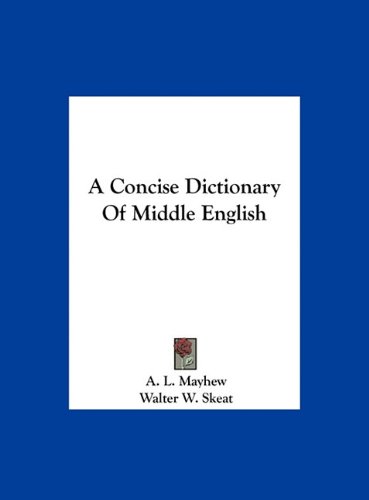Michel Marie Deza, Elena Deza0444520872, 9780444520876
This book comes out of need and urgency (expressed especially in areas of Information Retrieval with respect to Image, Audio, Internet and Biology) to have a working tool to compare data. The book will provide powerful resource for all researchers using Mathematics as well as for mathematicians themselves. In the time when over-specialization and terminology fences isolate researchers, this Dictionary try to be “centripedal” and “oikoumeni”, providing some access and altitude of vision but without taking the route of scientific vulgarisation. This attempted balance is the main philosophy of this Dictionary which defined its structure and style. Key features: – Unicity: it is the first book treating the basic notion of Distance in whole generality. – Interdisciplinarity: this Dictionary is larger in scope than majority of thematic dictionaries. – Encyclopedicity: while an Encyclopedia of Distances seems now too difficult to produce, this book (by its scope, short introductions and organization) provides the main material for it and for future tutorials on some parts of this material. – Applicability: the distances, as well as distance-related notions and paradigms, are provided in ready-to-use fashion. – Worthiness: the need and urgency for such dictionary was great in several huge areas, esp. Information Retrieval, Image Analysis, Speech Recognition and Biology. – Accessibility: the definitions are easy to locate by subject or, in Index, by alphabetic order; the introductions and definitions are reader-friendly and maximally independent one from another; still the text is structured, in the 3D HTML style, by hyperlink-like boldfaced references to similar definitions. * Covers a large range of subjects in pure and applied mathematics * Designed to be easily applied–the distances and distance-related notions and paradigms are ready to use * Helps users quickly locate definitions by subject or in alphabetical order; stand-alone entries include references to other entries and sources for further investigation |
Table of contents :
Title page ……Page 1
Contents ……Page 2
Preface ……Page 3
I. Mathematics of Distances ……Page 7
1. General Definitions ……Page 8
2. Topological Spaces ……Page 37
3. Generalizations of Metric Spaces ……Page 42
4. Metric Transforms ……Page 50
5. Metrics on Normed Structures ……Page 56
II. Geometry and Distances ……Page 67
6. Distances in Geometry ……Page 68
7. Riemannian and Hermitian Metrics ……Page 87
8. Distances on Surfaces and Knots ……Page 117
9. Distances on Convex Bodies, Cones, and Simplicial Complexes ……Page 128
III. Distances in Classical Mathematics ……Page 139
10. Distances in Algebra ……Page 140
11. Distances on Strings and Permutations ……Page 152
12. Distances on Numbers, Polynomials, and Matrices ……Page 160
13. Distances in Functional Analysis ……Page 171
14. Distances in Probability Theory ……Page 182
IV. Distances in Applied Mathematics ……Page 195
15. Distances in Graph Theory ……Page 196
16. Distances in Coding Theory ……Page 213
17. Distances and Similarities in Data Analysis ……Page 223
18. Distances in Mathematical Engineering ……Page 236
V. Computer-related Distances ……Page 245
19. Distances on Real and Digital Planes ……Page 246
20. Voronoi Diagram Distances ……Page 259
21. Image and Audio Distances ……Page 268
22. Distances in Internet and Similar Networks ……Page 285
VI. Distances in Natural Sciences ……Page 293
23. Distances in Biology ……Page 294
24. Distances in Physics and Chemistry ……Page 307
25. Distances in Geography, Geophysics, and Astronomy ……Page 315
26. Distances in Cosmology ad Theory of Relativity ……Page 324
VII. Real-world Distances ……Page 347
27. Length Measures and Scales ……Page 348
28. Non-mathematical and Figurative Meaning of Distance ……Page 356
References ……Page 377
Subject index ……Page 384
Reader’s Distance Definitions (Photo) ……Page 398 |







Reviews
There are no reviews yet.